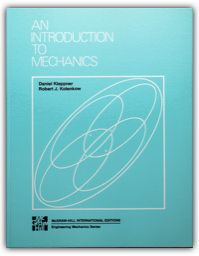Heat and Thermodynamics: An Intermediate Textbook
M. W. Zemansky
This respected text deals with large-scale, easily known thermal phenomena and then proceeds to small-scale, less accessible phenomena. The wide range of mathematics used in Dittman and Zemansky's text simultaneously challenges students who have completed a course in impartial differential calculus without alienating those students who have only taken a calculus-based general physics course. Examples of calculations are presented shortly after important formulas are derived. Students see the solutions of problems related to the formulas. Actual thermodynamic experiments are explained in detail. The student sees the applicability of abstract thermodynamic concepts and formulas to real situations.
Hidráulica Geral
Armando Lencastre
Hidráulica Geral é uma nova edição do livro editado em 1983, o qual, por sua vez, dava seguimento ao Manual de Hidráulica Geral, cuja primeira edição data de 1957.
Nesta edição, com cerca de 650 paginas, das quais 200 são de tabelas e de ábacos, são abordados os princípios fundamentais da teoria e da prática da Hidráulica.
Este livro tem constituído uma referencia indispensável para todos os que se interessam pela Hidráulica: nos gabinetes de estudo, nos laboratórios de hidráulica e nas escolas de engenharia.
Índice (resumido)
Capítulo 1 - Propriedades Físicas dos Fluidos
A- Constantes Físicas
B- Análise Dimensional
Capítulo 2 - Bases Teóricas da Hidráulica
A - Cinemática. Tipos de Escoamento
B - Dinâmica. Equação Geral do Movimento
C - Energia dos Escoamentos. Teorema de Bernoulli
D - Quantidade de Movimento. Teorema de Euler
E - Estabelecimento do Movimento
F - Escoamentos Irrotacionais
Capítulo 3 - Hidrostática
Capítulo 4 - Escoamentos em Pressão. Regime Permanente
A - Perdas de Carga Contínuas
B - Perdas de Carga Localizadas
C - Linha de Energia e Linha Piezométrica
D - Problemas Especiais
Capítulo 5 - Escoamentos com Superfície Livre. Regime Uniforme
A - Generalidades
B - Perdas de Energia
C - Estabilidade de Canais não Revestidos
Capítulo 6 - Escoamentos com Superfície Livre. Regime Permanente
A - Equações Gerais
B - Movimento Gradualmente Variado. Curvas de Regolfo
C - Movimento Rapidamente Variado. Ressalto Hidráulico
D - Singularidades nos Canais
E - Descarregadores de Cheias
F - Dissipação de Energia
Capítulo 7 - Escoamentos em Meios Porosos
A - Definições e Leis Gerais
B - Regime Permanente
C - Regime Variável
D - Drenagem dos Terrenos
Capítulo 8 -Medições Hidráulicas. Orifícios e Descarregadores
A - Medição de Níveis e Pressões
B - Medição de Velocidades
C- Medição de Caudais nas Condutas em Pressão
D - Orifícios
E - Descarregador de Soleira Delgada
F - Descarregadores de Soleira Espessa
E - Descarregadores de Soleira Curta
H - Canais Venturi. Medidores Parshall
Capítulo 9 - Bombas Centrífugas
Capítulo 10 - Regime Transitório em Pressão. Protecção das Condutas Elevatórias
A - Ondas Elásticas. Choque Hidráulico
B - Oscilação em Massa. Câmaras de Equilíbrio
C - Dispositivos de Protecção
Bibliografia
9729585903
A importância de ser electrão - O átomo e as suas ligações: um olhar sobre a evolução da química
José Lopes da Silva, Palmira Ferreira da Silva
Sinopse
"Este livro foi escrito de forma a poder ser lido por leitores interessados mas sem formação específica na área da Química (e da Física), e também por aqueles que querem recordar pormenores que se foram esbatendo na sua memória ao longo do tempo ou que gostam de estar informados sobre o estado actual dos conhecimentos e as perspectivas do que se avizinha.
Numa perspectiva da Química, o livro descreve a constituição dos átomos e das moléculas, enfatizando o papel determinante do electrão no avanço do conhecimento sobre esse processo e a correlação deste com as propriedades macroscópicas das substâncias e dos materiais.
A correlação entre o microscópico e o macroscópico é abordada de uma forma simples, sem recurso a expressões matemáticas, referindo o enquadramento histórico da evolução do conhecimento sobre o átomo e a molécula que, de alguma maneira, acompanhou a afirmação da Química como ciência básica do conhecimento.
Assim, A Importância de Ser Electrão constitui um útil contributo para uma maior e melhor compreensão das potencialidades da Química e da forma como a ela chegámos, num longo percurso que se iniciou muito antes da nossa era e chegou aos dias de hoje."
Do Preâmbulo
“Ao escolhermos o título deste livro inspirando-nos no da peça de Oscar Wilde, The Importance of Being Earnest, tivemos presente a importância da descoberta do electrão para o espantoso desenvolvimento de várias disciplinas científicas que marcou o século XX.
É, em boa medida, o caso da Química que, devido às suas contribuições para o aprofundamento do conhecimento do mundo microscópico e da sua capacidade de produzir novos produtos, inventando novos compostos e novos materiais, ocupa um lugar de destaque na história do «boom científico» que atravessou o século passado e se prolonga na actualidade.
Na verdade, não obstante as suas pequeníssimas dimensões, é no comportamento activo do electrão, dependente da sua energia, que encontramos justificações confiáveis, nada insignificantes, de propriedades dos elementos químicos e dos materiais por eles formados. “
Autor(es)
JOSÉ LOPES DA SILVA Professor Catedrático Jubilado do Instituto Superior Técnico (IST). Licenciado em Engenharia Química e Agregado em Química Física pela Universidade Técnica de Lisboa (UTL) através do IST e Docteur-ès-Sciences Physiques pela Universidade de Estrasburgo. Foi responsável pela disciplina de Química Geral dos curricula dos cursos de Engenharia do IST, fundador do Centro de Química Física Molecular do IST e responsável pelo Grupo «Superfícies, Interfaces e Dinâmica Molecular de Sistemas Moleculares, Macromoleculares e Nanoestruturados». Foi Reitor da UTL e Presidente do CRUP.
PALMIRA FERREIRA DA SILVA Doutorada em Engenharia Química pela Universidade Técnica de Lisboa/Instituto Superior Técnico, é professora auxiliar no Departamento de Engenharia Química e Biológica do IST. É responsável pela disciplina de Química Geral para os cursos de Biomédica e Física Tecnológica. Com uma presença activa na blogosfera de ciência nacional, no blogue De Rerum Natura, integra desde Julho o Conselho de Gestão do Técnico com um pelouro onde pode concretizar algo que a motiva desde sempre: a divulgação de ciência e o estímulo da curiosidade científica.
9896163456
In Search of Schrodinger's Cat
John Gribbin
Quantum theory is so shocking that Einstein could not bring himself to accept it. It is so important that it provides the fundamental underpinning of all modern sciences. Without it, we'd have no nuclear power or nuclear weapons, no TV, no computers, no science of molecular biology, no understanding of DNA, no genetic engineering. In Search of Schrodinger's Cat tells the complete story of quantum mechanics, a truth stranger than any fiction. John Gribbin takes us step by step into an ever more bizarre and fascinating place, requiring only that we approach it with an open mind. He introduces the scientists who developed quantum theory. He investigates the atom, radiation, time travel, the birth of the universe, superconductors and life itself. And in a world full of its own delights, mysteries and surprises, he searches for Schrodinger's Cat - a search for quantum reality - as he brings every reader to a clear understanding of the most important area of scientific study today - quantum physics. In Search of Schrodinger's Cat is a fascinating and delightful introduction to the strange world of the quantum - an essential element in understanding today's world.
0552125555
|
Introduction to Differential Equations and Their Applications
Stanley J. Farlow
This text is intended for a one-term course in introductory differential equations and is designed for students in pure and applied mathematics who have had a course in calculus. The text presents a balance of mathematical rigour and intuitive thinking. The illustrations aim to enhance the conceptual material and allow students to visualize the mathematics. The treatment of chaotic dynamical systems introduces students to the basic ideas surrounding chaotic motion. Problem sets, which contain computer applications, are carefully graduated from the routine to the more challenging and extension exercises asking students to expand on the material are included to pique student interest. Brief historical notes place topics in their proper historical and cultural context.
Part 1 Introduction to Differential Equations: Prologue; Basic Definitions and Concepts; Solutions, Initial Value Problems, and Existence of solutions. Part 2 First Order Differential Equations: First Order Linear Equations; Separable Equations; Growth and Decay Phenomena; Mixing Phenomena; Cooling and Heating Phenomena; More Applications; The Direction Field and Newton's Method; Higher order Numerical Methods. Part 3 Second Order Linear Equations: Introduction to Second Order Linear Equations; Fundamental Solutions of the Homogeneous Equation; Reduction of Order; Homogeneous Equations with Constant Coefficients - Real Roots; Homogeneous Equations with Constant Coefficients - Complex Roots; The Nonhomogeneous Equation; Solving Nonhomogeneous Equations - Method of Undetermined Coefficients; Solving Nonhomogeneous Equations - Method of Variation of Parameters; Mechanical Systems and Simple Harmonic Motion; Unforced Undamped Vibrations; Forced Vibrations; Introduction to Higher Order Equations (optional). Part 4 Series Solutions: Introduction - A Review of Power Series; Power Series Solutions About an Ordinary Point - Part I; Power Series Solutions About an Ordinary Point - Part II; Series Solutions about Singular Points - The Method of Frobenius; Bessel's Functions. Part 5 The Laplace Transform: Definition of the Laplace Transform; Properties of the Laplace Transform; The Inverse Laplace Transform; Initial-Value Problems; Step Functions and Delayed Functions; Differential Equations with Discontinuous Forcing Functions; Impulse Forcing Functions; The Convolution Integral. Part 6 System of Differential Equations: Introduction to Linear Systems - The Method of Elimination; Review of Matrices; Basic Theory of First Order Linear Systems; Homogeneous Linear Systems with Real Eigenvalues; Homogeneous Linear Systems with Complex Eigenvalues; Nonhomogeneous Linear Systems; Nonhomogeneous Linear Systems - The Laplace Transform (optional); Applications of Linear Systems; Numerical Solution of Systems of Differential Equations. Part 7 Difference Equations: Introduction to Difference Equations; Homogeneous Equations; Nonhomogeneous Equations; Applications; The Logistic Equation and the Path to Chaos; Iterative Systems - Julia Sets and the Mandelbrot Set (optional). Part 8 Nonlinear Differential Equations and Chaos: Phase Plane Analysis of Autonomous Systems; Equilibrium Points and Stability for Linear Systems; Stability - Almost Linear Systems; Chaos, Poincare Sections and Strange Attractors. Part 9 Partial Differential Equations: Fourier Series; Fourier Sine and Cosine Series; Introduction to Partial Differential Equations; The Vibrating String - Separation of Variables; Interpretation of the Vibrating String as Superposition; The Heat Equation and Separation of Variables; Laplace's Equation Inside a Circle. Appendix: Complex Numbers and Complex-Valued Functions. Answers to Problems.
0071133151
Introduction to Electrodynamics
David J. Griffiths
For junior/senior-level electricity and magnetism courses. This book is known for its clear, concise and accessible coverage of standard topics in a logical and pedagogically sound order. The Third Edition features a clear, accessible treatment of the fundamentals of electromagnetic theory, providing a sound platform for the exploration of related applications (ac circuits, antennas, transmission lines, plasmas, optics, etc.). Its lean and focused approach employs numerous examples and problems.
013805326X
An Introduction to Error Analysis: The Study of Uncertainties in Physical Measurements
John R. Taylor
This best-selling text by John Taylor, now released in its second edition, introduces the study of uncertainties to lower division science students. Assuming no prior knowledge, the author introduces error analysis through the use of familiar examples ranging from carpentry to well-known historic experiments. Pertinent worked examples, simple exercises throughout the text, and numerous chapter-ending problems combine to make the book ideal for use in physics, chemistry, and engineering lab courses. The first edition of this book has been translated into six languages.
093570275X
An Introduction to Mechanics
Daniel Kleppner, Robert J. Kolenkow
There is good reason for the tradition that students of science and engineering start college physics with the study of mechanics: mechanics is the cornerstone of pure and applied science. The concept of energy, for example, is essential for the study of the evolution of the universe, the properties of elementary particles, and the mechanisms of biochemical reactions. The concept of energy is also essential to the design of a cardiac pacemaker and to the analysis of the limits of growth of industrial society. However, there are difficulties in presenting an introductory course in mechanics which is both exciting and intellectually rewarding. Mechanics is a mature science and a satisfying discussion of its principies is easily lost in a superficial treatment. At the other extreme, attempts to "enrich" the subject by emphasizing advanced topics can produce a false sophistication which emphasizes technique rather than understanding. This text was developed from a first-year course which we taught for a number of years at the Massachusetts Institute of Technology and, earlier, at Harvard University. We have tried to present mechanics in an engaging form which offers a strong base for future work in pure and applied science. Our approach departs from tradition more in depth and style than in the choice of topics; nevertheless, it reflects a view of mechanics held by twentieth-century physicists.
0070854238
Introduction to Operations Research
Frederick Hillier, Gerald Lieberman
The 8th edition of "Introduction to Operations Research" remains the classic operations research text, while incorporating a wealth of state-of-the-art, user-friendly software and more coverage of modern OR topics. The hallmark features of this edition include solid coverage of fundamentals and state-of-the-practice operations research software used in conjunction with examples from the text. This edition will also feature the latest developments in OR, such as metaheuristics, simulation, and spreadsheet modeling.
007123828X
An Introduction to Quantum Physics
A.P. French, Edwin F. Taylor
Provides comprehensive coverage of all the fundamentals of quantum physics. Full mathematical treatments are given. Uses examples from different areas of physics to demonstrate how theories work in practice. Text derived from lectures delivered at Massachusetts Institute of Technology.
0748740783
Introduction to Solid State Physics
Charles Kittel
Since the publication of the first edition over 50 years ago, Introduction to Solid State Physics has been the standard solid state physics text for physics students. The author's goal from the beginning has been to write a book that is accessible to undergraduates and consistently teachable. The emphasis in the book has always been on physics rather than formal mathematics. With each new edition, the author has attempted to add important new developments in the field without sacrificing the book's accessibility and teachability.
* A very important chapter on nanophysics has been written by an active worker in the field. This field is the liveliest addition to solid state science during the past ten years
* The text uses the simplifications made possible by the wide availability of computer technology. Searches using keywords on a search engine (such as Google) easily generate many fresh and useful references
0471680575
|
















 Made with Delicious Library
Made with Delicious Library